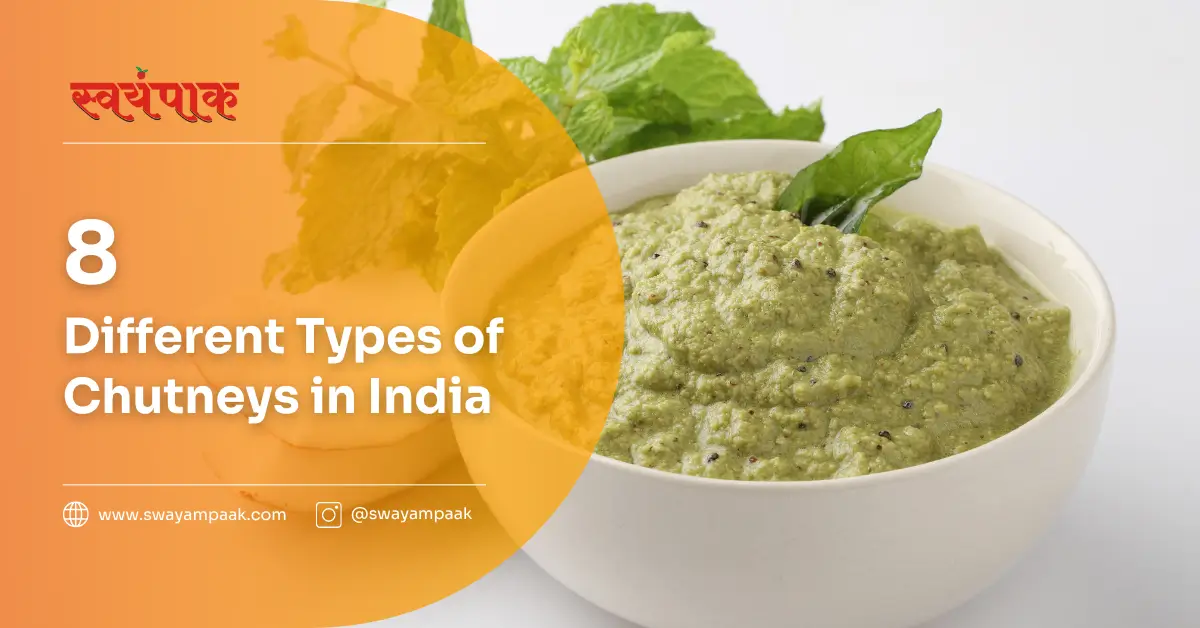When it comes to Indian cuisine, the diversity of flavours and spices is truly unparalleled. And one element that adds an extra dimension to these flavours is the chutney.
Chutneys are an integral part of Indian meals, offering a burst of taste that complements a wide range of dishes. In this article, we will take you on a culinary journey as we explore the different types of chutneys in India, their history, significance, and the various regional variations that make them unique.
- Different types of chutneys in Indian cuisine
- Conclusion
Different types of chutneys in Indian cuisine
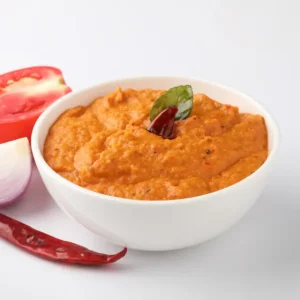

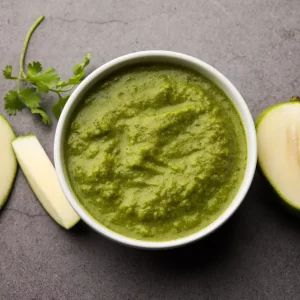
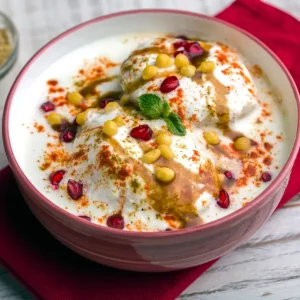
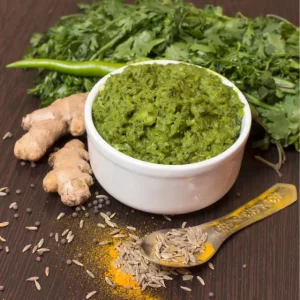
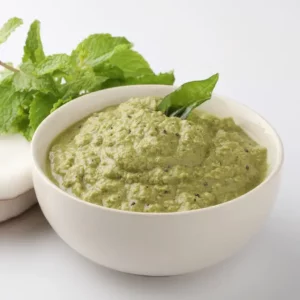
Chutneys have a long and rich history in Indian cuisine, dating back thousands of years. The word “chutney” is derived from the Hindi word “chatni,” which means to lick.
Traditionally, chutneys were made by grinding together various ingredients, such as fruits, vegetables, spices, and herbs, into a thick paste. They were primarily used as a condiment to enhance the flavours of a meal.
In Indian culture, there are different types of chutneys which hold a special significance in the cuisine. They are not just a side accompaniment but are considered an essential part of a balanced meal. Along with homemade pickles, homemade chutneys are very prominent in India.
The different types of chutneys are believed to aid digestion and provide a refreshing contrast to the rich and spicy flavours of Indian dishes. They are also known for their medicinal properties, as many chutneys incorporate ingredients with health benefits, such as ginger, garlic, and turmeric.
Regional variations of chutneys in India
India is a diverse country with a multitude of regional cuisines, each with its own unique set of flavours and ingredients. Unsurprisingly, chutneys also vary greatly across different regions of India. Let’s take a closer look at some of the regional variations of chutneys.
- North Indian chutneys: In the northern part of India, chutneys are often made with ingredients like mint, coriander, and yoghurt. These chutneys are usually tangy and refreshing, with a cooling effect that complements the spicy curries and kebabs of the region.
- South Indian chutneys: South Indian chutneys are known for their bold flavours and spicy kick. Ingredients like coconut, tamarind, and curry leaves are commonly used. These chutneys are typically served with dosas, idlis, and other rice-based dishes.
- East Indian chutneys: The eastern region of India is known for its unique chutneys made from ingredients like raw mango, mustard seeds, and poppy seeds. These chutneys have a distinct sweet and tangy flavour profile that pairs well with fish and seafood dishes.
- West Indian chutneys: Chutneys from the western part of India often feature ingredients like peanuts, sesame seeds, and jaggery. These chutneys have a sweet and nutty flavour and are commonly enjoyed with snacks like bhel puri and samosas.
By exploring the regional variations of chutneys, you can truly appreciate the diverse culinary landscape of India.
Sweet chutneys – recipes and flavours
One category of chutneys that deserves special attention is the sweet chutneys. These chutneys add a delightful burst of sweetness to any meal and are often made with fruits, sugar, and spices. Here are a few popular sweet chutneys and their unique flavours:
Tamarind chutney
Tamarind chutney offers a sweet and tangy punch to North Indian cuisine. Made with tamarind pulp, a naturally acidic fruit, it balances the sweetness from jaggery or dates with the tartness of the tamarind.
Spices like cumin or coriander can be added for depth, while some versions might include chopped dates or raisins for extra texture. The resulting chutney is a vibrant condiment, enjoyed with savoury street food like samosas and chaat. Its sweet and tangy notes cut through the richness of the fried snacks, creating a delightful flavour contrast.
Date and fig chutney
Date and fig chutney is a festive condiment that blends sweet and savoury. Dates provide natural sweetness and chewiness, while figs add depth and earthiness. Onions balance the sweetness with a savoury base, and vinegar adds a tangy counterpoint.
Spices like ginger, chillies, or cinnamon can create a warm and complex flavour profile, with some versions offering a fiery kick. This chutney is a versatile delight, enjoyed with cheeseboards, roasted meats, sandwiches, or even Indian dals and curries.
Mango chutney
Mango chutney is a vibrant condiment showcasing the versatility of the mango in Indian cuisine. Made with unripe mangoes, it offers a spectrum of flavours depending on the recipe. Some versions lean towards sweet and tangy, using jaggery or sugar to balance the mango’s tartness.
Others highlight the spicy side, incorporating chillies and ginger for a fiery kick. Regardless of the approach, the chutney boasts a unique depth of flavour thanks to the unripe mango’s acidity. It’s enjoyed across India, particularly as an accompaniment to savoury snacks like samosas and pakoras, adding a contrasting pop of sweet, tart, or spicy flavour to balance the richness of the food.
Coconut chutney
Coconut chutney, a South Indian favourite, is a light and refreshing condiment made primarily with fresh coconut, chillies for spice, and cilantro for a pop of freshness. Other ingredients like ginger or curry leaves may be included.
The chutney can be enjoyed smooth or slightly coarse, and its creamy texture and balanced flavours of coconut, spice, and herb make it a perfect dip for idli, dosa, vada, and other South Indian breakfast staples.
Peanut Chutney
Peanut chutney, a popular condiment from Maharashtra, is a creamy and flavorful dip made with roasted peanuts as the star ingredient. The roasted peanuts lend a rich, nutty base, while chillies add a pleasant kick of spice. Spices like cumin seeds or curry leaves can be included for extra depth.
The chutney can be smooth or slightly coarse, depending on your preference. Its creamy texture and balanced flavours of nuttiness, spice, and sometimes a hint of sweetness make it a perfect accompaniment to savoury Indian snacks like chaat and samosas, or even as a dip for idli and dosa.
Dahi Chutney
Dahi chutney, a refreshing condiment popular in South India, is a cool and creamy dip made with yoghurt (dahi) as its base. Chopped mint and cilantro add a burst of freshness and a touch of peppery flavour. Often, onions are included for a bit of a bite, and some recipes might incorporate green chillies for a hint of spice.
The yoghurt is typically strained to create a thicker consistency, perfect for dipping. The overall flavour profile is cool and refreshing with a balance of tang from the yoghurt, herbaceousness from the mint and cilantro, and a possible hint of oniony bite or spicy kick.
This delightful chutney is a common accompaniment to South Indian favourites like idli, dosa, and vada, adding a contrasting layer of coolness and freshness to the savoury dishes.
A Dahi Mirchi recipe can be prepared using this chutney as well.
Garlic Chutney
Garlic chutney packs a pungent punch! It’s a condiment prepared with a base of fresh garlic, sometimes accompanied by dry or fresh coconut for a textural contrast. Peanuts or other nuts can be included for richness, and green or red chillies add a spicy kick.
The chutney comes in both wet and dry forms. The wet chutney is a versatile condiment, enjoyed with kebabs, tikkas, or even as a dip for vegetables. The dry version, sometimes called garlic powder chutney, is a flavorful spice blend used to add a garlicky kick to curries and other dishes.
Overall, garlic chutney, with its pungent character and spicy heat, is a condiment that adds boldness and depth to various Indian meals.
Coriander Chutney
Coriander chutney, also known as cilantro chutney, is a vibrant green condiment bursting with fresh flavour. Fresh coriander leaves (cilantro) are the star of the show, offering a bright, citrusy aroma and a touch of peppery bite.
Green chillies add a customizable level of heat, while ingredients like ginger and lemon juice can be included for extra depth and tang. The chutney can be enjoyed smooth or slightly coarse, depending on your preference.
Its vibrant green colour, the refreshing flavour profile of citrusy coriander, balanced spice, and sometimes a hint of ginger or tang, make it a perfect accompaniment to South Indian breakfasts like idli, dosa, and vada. It can also be enjoyed with savoury snacks or even as a dip for vegetables.
These sweet chutneys are incredibly versatile and can be used in a variety of dishes. Whether you’re looking to add a touch of sweetness to a savoury curry or elevate your snack game, these chutneys are sure to impress.
Tangy chutneys – recipes and flavours
Tangy chutneys are another popular category that adds a tangy punch to any meal. These chutneys are typically made with ingredients like tomatoes, tamarind, and vinegar. Let’s explore some tangy chutneys and their unique flavours:
- Tomato chutney: Made from ripe tomatoes, onions, and spices, tomato chutney has a tangy and slightly sweet flavour. It is a versatile chutney that pairs well with dosas, uttapams, and even sandwiches.
- Mint chutney: Mint chutney is a refreshing and tangy condiment made from fresh mint leaves, green chillies, and yoghurt. It is commonly served with kebabs, biryanis, and grilled meats.
- Imli chutney: Imli chutney, also known as tamarind chutney, is made from tamarind pulp, jaggery, and spices. It has a tangy and slightly sweet flavour that complements chaats, samosas, and pakoras.
- Lemon chutney: Lemon chutney is made from lemon zest, juice, and spices. It has a tangy and zesty flavour that pairs well with seafood, grilled meats, and even salads.
These tangy chutneys add a burst of flavour to any dish and can take your meals to the next level. From appetizers to main courses, these chutneys are a must-have in your culinary repertoire.
Spicy chutneys – recipes and flavours
If you’re a fan of spicy food, then spicy chutneys are a must-try. These chutneys are made with a variety of fiery ingredients like chilli peppers, garlic, and ginger. Let’s explore some spicy chutneys and their unique flavours:
- Green chilli chutney: Made from green chillies, cilantro, and spices, this chutney is not for the faint-hearted. It has a fiery and spicy flavour that pairs well with kebabs, samosas, and parathas.
- Garlic chutney: Garlic chutney is made from roasted garlic, dried red chillies, and spices. It has a strong and pungent flavour that adds a kick to sandwiches, wraps, and stir-fries.
- Red chilli chutney: This chutney is made from dried red chillies, onions, and spices. It has a smoky and spicy flavour that pairs well with rice dishes, curries, and grilled vegetables.
- Pudina chutney: Pudina chutney, or mint chutney, is made from fresh mint leaves, green chillies, and spices. It has a spicy and cooling flavour that complements biryanis, kebabs, and tandoori dishes.
These spicy chutneys are perfect for those who love to add a fiery kick to their meals. Just a spoonful of these chutneys can elevate the flavours and take your taste buds on an unforgettable journey.
Unique and lesser-known chutneys
While sweet, tangy, and spicy chutneys are the most popular, there are many unique and lesser-known chutneys that are worth exploring. These chutneys offer a glimpse into the lesser-known culinary traditions of India. Here are a few examples:
- Gongura chutney: Gongura chutney is a tangy and spicy chutney made from gongura leaves, also known as sorrel leaves. It is a specialty of Andhra Pradesh and is often served with rice and dal.
- Kasundi chutney: Kasundi chutney is a mustard-based chutney from West Bengal. It has a pungent and spicy flavour and is commonly served with fish and seafood dishes.
- Dhaniya-Pudina chutney: This chutney is made from a combination of fresh coriander and mint leaves, along with spices. It has a refreshing and herbaceous flavour that pairs well with kebabs, rolls, and sandwiches.
- Guava chutney: Guava chutney is a sweet and tangy chutney made from ripe guavas, sugar, and spices. It is a specialty of Gujarat and is often enjoyed with Indian breads like puri and thepla.
These unique chutneys offer a glimpse into the diverse culinary traditions of India and are a testament to the rich tapestry of flavours that the country has to offer.
How to incorporate chutneys in your meals?
Now that we’ve explored the different types of chutneys in India, let’s talk about how to incorporate them into your meals. Chutneys can be incredibly versatile and can be used in a variety of ways. Here are a few ideas to get you started:
- Spread: Use chutneys as a spread on sandwiches, wraps, and burgers. The tangy and flavourful chutneys can elevate the taste of your favourite snacks.
- Dip: Serve chutneys as a dip for chips, crackers, and vegetable sticks. The contrasting flavours of the chutneys can add an extra dimension to your snacking experience.
- Marinade: Use chutneys as a marinade for meats, seafood, and vegetables. The flavours of the chutneys can infuse into the ingredients, adding a delicious twist to your grilled or roasted dishes.
- Dressing: Mix chutneys with yoghurt, lime juice, or oil to create flavorful dressings for salads and grain bowls. The chutneys can add a burst of taste and make your salads more exciting.
- Accompaniment: Serve chutneys as a side dish with your favourite Indian meals. Whether it’s a dosa, curry, or biryani, chutneys can enhance the flavours and make your meals more enjoyable.
By incorporating chutneys into your meals, you can unlock a world of flavours and take your culinary journey to new heights.
Chutney pairing suggestions
Pairing chutneys with the right dishes can elevate the taste and create a harmonious culinary experience. Here are some pairing suggestions for different types of chutneys:
Sweet chutneys
- Tamarind chutney: Pair with samosas, pakoras, and chaats.
- Date and fig chutney: Pair with cheese and crackers or use as a spread on sandwiches.
- Mango chutney: Pair with curries, grilled meats, and rice dishes.
- Coconut chutney: Pair with dosas, idlis, and vadas.
Tangy chutneys
- Tomato chutney: Pair with dosas, uttapams, and sandwiches.
- Mint chutney: Pair with kebabs, biryanis, and grilled meats.
- Imli chutney: Pair with chaats, samosas, and pakoras.
- Lemon chutney: Pair with seafood, grilled meats, and salads.
Spicy chutneys
- Green chilli chutney: Pair with kebabs, samosas, and parathas.
- Garlic chutney: Pair with sandwiches, wraps, and stir-fries.
- Red chilli chutney: Pair with rice dishes, curries, and grilled vegetables.
- Pudina chutney: Pair with biryanis, kebabs, and tandoori dishes.
These pairing suggestions are just a starting point, and you can experiment with different combinations to find your own personal favourites.
Conclusion
Chutneys are an integral part of Indian cuisine, offering a burst of flavours that enhance the taste of a wide range of dishes. From sweet and tangy to spicy and unique, the different types of chutneys in India reflect the country’s diverse culinary traditions.
By exploring the regional variations, experimenting with flavours, and incorporating chutneys into your meals, you can embark on a flavorful journey that will tantalize your taste buds. So go ahead, give these chutneys a try, and unlock a world of flavours that will transport you to the vibrant streets of India.

